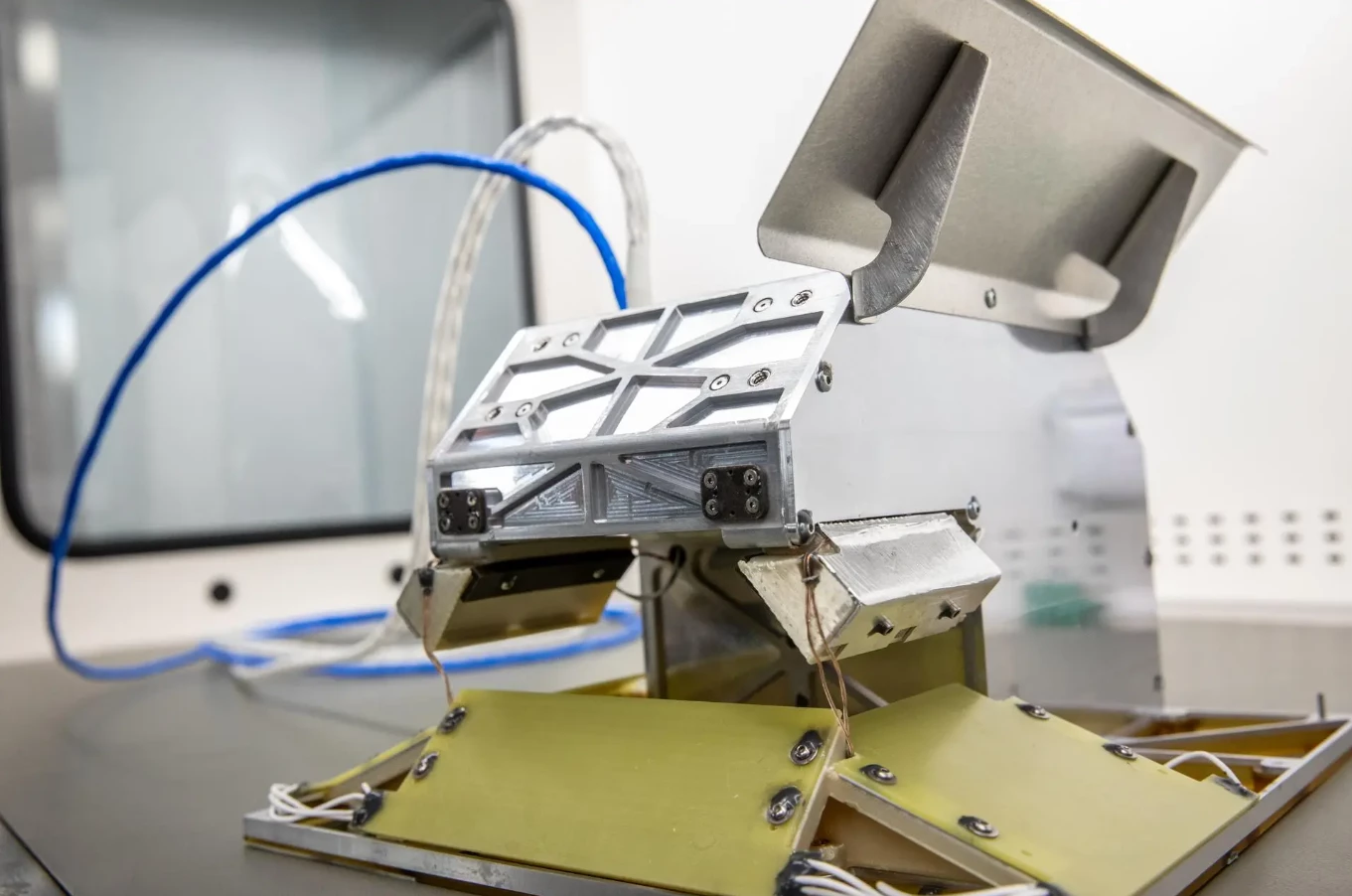Future Moon bases may be a bit tidier thanks to an electric shield that protects equipment from destructive lunar dust. NASA's Electrodynamic Dust Shield (EDS) technology promises to tame the destructive dust that clings to equipment.
When Neill Armstrong set foot on the Moon on July 20, 1969, there was elation around the world, followed by a mild sense of being cheesed off after discovering that lunar dust sticks to everything and gets everywhere. This is why many pictures from those pioneering missions show the astronauts looking like coal miners under their suits' gray/black coatings.
Dust is something that we're all familiar with, but lunar dust is very different from its terrestrial counterpart. Dust on the Moon is produced by millions of years of micrometeorites striking the surface, pummeling it into smaller and finer particles. Because there's no wind or water on the Moon, these particles aren't worn or dissolved, so they end up with sharp, glasslike edges that make them extremely abrasive.
Worse, the extremely dry conditions and relentless cosmic radiation sets up an electrostatic charge in the particles so they cling to spacesuits, boots, solar panels, camera lenses, and just about everything else. It can also get into gaskets and seals, causing them to dangerously degrade.

To fight this, NASA, through its Commercial Lunar Payload Services (CLPS) initiative and Artemis program, is developing EDS. You can't just brush away Moon dust because of its electric charge that makes things worse. Instead, the EDS uses a pattern of electrodes to produce an electric field that moves like a wave. This produces an uneven field around the particles, causing them to move as if whisked by an invisible broom.
So far, EDS has been tested in vacuum chambers using simulated lunar dust and was flown to the International Space Station (ISS) for orbital testing. In addition, the technology also flew on the IM-1 lunar landing mission where it was used to keep the lenses clear on the EagleCam instrument successfully deployed from Intuitive Machines’ Odysseus lander.
The hope is that, once the technology has matured, it can be used on the Artemis landing missions to protect instruments as well as preserving the integrity of gaskets, seals, and hatches. Not to mention keeping spacesuits a bit more presentable.
"EDS technology can be used outside of a habitat to help clean surfaces like railings and floors, but it can be used inside as well," said Dr. Charles Buhler, lead research scientist at the Electrostatics and Surface Physics Laboratory at the Kennedy Space Center. "All of those applications are being evaluated and tested."
Source: NASA





